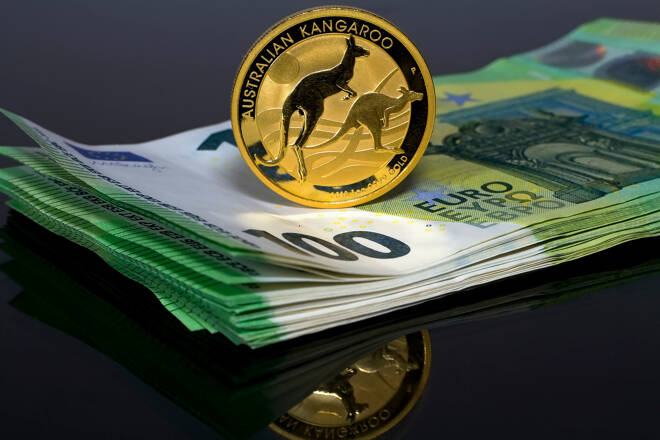Advertisement
Advertisement
AUD/USD Daily Forecast: China’s PMI Key to AUD/USD’s Next Move Toward $0.68500
By:
Key Points:
- Australian economy at a crucial juncture, with PMI data influencing AUD/USD trends.
- China’s Caixin PMI expected to impact Aussie exports, potentially boosting AUD/USD.
- Fed rate cut expectations and US labor market data may drive AUD/USD toward $0.68500.
In this article:
Aussie Manufacturing in Focus
On Monday, September 2, finalized Judo Bank Manufacturing PMI figures may influence buyer demand for the AUD/USD.
The Judo Bank Manufacturing PMI increased from 47.5 in July to 48.7 in August, according to the preliminary survey.
An upward revision to the PMI could boost Aussie dollar demand. An improving macroeconomic backdrop may ease concerns about the Australian economy. However, the survey is unlikely to influence the RBA rate path as manufacturing accounts for less than 10% of the economy. Australian services-driven inflation and China’s economy remain focal points for the RBA.
Expert Views on the Australian Economy
Judo Bank Chief Economic Advisor Warren Hogan commented on the preliminary survey, stating,
“The Australian economy is at a critical juncture. With less restrictive monetary policy than many similar economies and new fiscal stimulus entering the economy in July, it is not at all clear that inflation is on a trajectory back to the central bank’s target.”
China Manufacturing Crucial for the Aussie Dollar
Later on Monday, China’s all-important Caixin Manufacturing PMI will impact the AUD/USD pair.
Economists forecast the Caixin Manufacturing PMI to increase from 49.8 in July to 50.0 in August.
A return to expansion in the manufacturing sector may signal improving demand, which may support Aussie exports.
Given China accounts for one-third of Australian exports, and with over 50% of Australia’s GDP linked to trade, rising exports could positively affect the Aussie economy and the Aussie dollar.
Upbeat manufacturing sector data from Australia and China could push the AUD/USD toward $0.68500.
China’s NBS Private Sector PMIs Send Mixed Signals
On Saturday, August 31, China’s NBS private sector PMIs gave mixed signals. The Non-Manufacturing PMI unexpectedly increased from 50.2 in July to 50.3 in August. However, the Manufacturing PMI fell from 49.4 to 49.1.
CN Wire, an FICC Investor, researcher, and energy observer, covering China’s business and market, commented,
“In September, steel market demand is expected to rebound. As the impact of high temperatures and heavy rains across various regions gradually diminishes, the steel industry is approaching its traditional peak season, providing a solid foundation for the recovery of downstream demand.”
Steel demand is crucial for the Aussie dollar, given Australia‘s significant role as an iron ore exporter.
Other Stats
Other stats include Australian building permit and gross company profit data. However, these will likely play second fiddle to the PMIs.
US Economic Calendar
Later in the session, investors should monitor comments from the Fed. Views on inflation, the labor market, and the Fed rate path could influence US dollar demand.
The markets are betting on a September Fed rate cut, though the size of the possible cut remains uncertain.
According to the CME FedWatch Tool, there is a 70% chance of a 25-basis point rate cut, rising from 64.0% on August 23.
Support for a 50 basis point Fed rate cut could indicate an AUD/USD move toward $0.68500. A 50-basis point rate cut would narrow the interest rate differential between Australia and the US to 75 basis points.
Expert Views on the Fed Rate Path
Shane Oliver, Head of Investment Strategy and Chief Economist at AMP, remarked on Friday’s inflation numbers, stating,
“US Jul core PCE deflator slightly softer at 0.16%mom/2.6%yoy (mkt +0.2%m/+2.7%y), from 2.6%y in Jun PCE deflator in line at 0.2%m/2.5%y. Leaves Fed on track to cut in Sep, which in absence of much weaker jobs looks like being -0.25%”
On Friday, August 6, the US Jobs Report could dictate the Fed’s September interest rate decision.
Short-Term Forecast: Bullish
Near-term AUD/USD trends will hinge on the PMI numbers from China, the US ISM Services PMI (Thurs), and the US Jobs Report (Fri).
A higher US unemployment rate and softer services sector activity may fuel bets on a 50-basis point Fed rate cut in September, possibly pushing the AUD/USD toward $0.68500. However, weaker-than-expected PMI numbers from China could slow the Aussie dollar’s momentum.
Investors should stay alert to economic data and central bank commentary that may influence AUD/USD price trends. Monitor the real-time data, news updates, and expert commentary to adjust your trading strategies.
Stay updated with our latest views and analysis to manage exposures to the forex markets.
AUD/USD Price Action
Daily Chart
The AUD/USD held comfortably above the 50-day and 200-day EMAs, confirming the bullish price trend.
A break above the $0.67967 resistance level could support a move toward $0.68500. Furthermore, a return to $0.68500 may give the bulls a run at the $0.68996 resistance level.
Investors should consider the Manufacturing PMIs and central bank commentary.
Conversely, a drop below $0.67500, could signal a fall toward the $0.67003 support level.
With a 14-period Daily RSI reading of 60.94, the Aussie dollar may climb to $0.68500 before entering overbought territory.
About the Author
Bob Masonauthor
With over 20 years of experience in the finance industry, Bob has been managing regional teams across Europe and Asia and focusing on analytics across both corporate and financial institutions. Currently he is covering developments relating to the financial markets, including currencies, commodities, alternative asset classes, and global equities.
Latest news and analysis
Advertisement
